Much like the discerning palate that savours the intensity of an espresso over a pint of watery Americano coffee, appreciators of fortified wines understand the appeal of concentrated flavours.
However, the once eminent stature of fortified wines has dimmed in the wake of contemporary trends in quaffing. Whether due to shifting consumer preferences, ruthless marketing strategies, or a conformist adherence to modern tastes, fortified wines have been somewhat overshadowed. Yet, to those in the know they retain an unparalleled aura of sophistication and depth that rise above fleeting trends. It’s time for a reawakening—a call to rediscover the artistry and complexity of fortified wines.
Understanding fortified wines
Fortified wines, distinguished by the addition of distilled spirits, possess a richness and complexity that sets them apart from normie wine. The fortification process not only imbues these wines with higher alcohol content but also enhances their longevity, allowing them to mature gracefully.
Unlike their unfortified counterparts, fortified wines undergo a process that elevates the essence of the grape to new heights.
The genesis of fortified wines begins in the vineyard, where grapes are meticulously chosen for their optimal sugar content and flavour profile. Following fermentation, which converts sugars into alcohol, the addition of distilled spirits—typically brandy or grape spirit—halts the process, leaving behind residual sugars and elevating the alcohol content. This fortification not only imbues the wine with a robust structure but also arrests its aging, allowing for the development of nuanced flavours.
The end product rivals the concentrated essence of an espresso shot. From the nutty complexities of fino sherry to the velvety richness of vintage port, fortified wines offer an array of expressions, each bearing the hallmark of its terroir, process and craftsmanship.
In a world where blandness often reigns supreme, fortified wines stand out for their unapologetic boldness, inviting the discerning palate to indulge in their opulent splendour.
Among the pantheon of fortified wines, several illustrious varieties demand attention, including sherry, port, marsala, and Madeira wine. For the purpose of this exploration, we concentrate our focus on the most renowned and beloved: sherry and port.
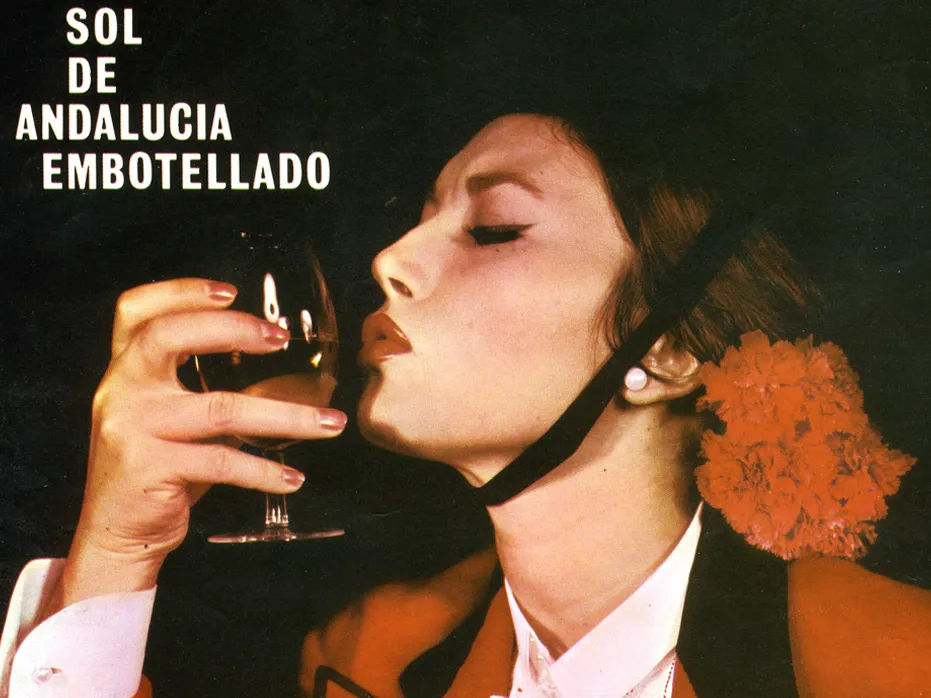
Jerez and the unhurried art of sherry making
Nestled in the sun-drenched hills of Andalusia lies the historic town of Jerez de la Frontera, the beating heart of sherry production. Here, amid ancient bodegas and labyrinthine cellars, the unhurried art of sherry making unfolds, steeped in tradition and reverence for the land.
From the crisp elegance of fino to the decadent opulence of Pedro Ximénez, each style and tradition of sherry making contributes to a rich and multifaceted drinking experience, representing centuries of tradition and craftsmanship.
Fino
Fino sherry, appreciated for its delicate and bone-dry character, undergoes aging under a protective layer of flor yeast, resulting in a crisp and refreshing wine. Fino sherry is the base for the wonderfully refreshing rebujito, a combination of fino and lemonade, or variations on that theme.
Manzanilla
Manzanilla, hailing from the coastal town of Sanlúcar de Barrameda, shares similar characteristics to fino but boasts a distinctive briny tang imparted by its proximity to the sea.
Oloroso
Oloroso sherry, on the other hand, foregoes flor aging entirely, allowing the wine to develop a deep amber color and a luscious bouquet of dried fruits and spices.
Amontillado
Amontillado sherry, a hybrid of fino and oloroso styles, begins its aging process under flor yeast before transitioning to oxidative aging, resulting in a wine that balances nutty aromas with a rich, caramelized depth.
Palo Cortado
Palo Cortado sherry occupies a rare and enigmatic realm, displaying characteristics of both amontillado and oloroso styles. This elusive wine undergoes an unpredictable aging process, resulting in a wine of unparalleled complexity and finesse.
Pedro Ximénez
Pedro Ximénez, sometimes called nectar, is a sweet dessert sherry that offers a decadent finale to the spectrum of sherry styles. Crafted from sun-dried grapes and aged to perfection, it yields a syrupy elixir bursting with flavours of raisins, figs, and molasses. This sherry pairs wonderfully with various types of cheese or can be poured over mince pies and Christmas pudding during the Yuletide season.
V.O.R.S.
VORS stands for Vinum Optimum Rare Signatum, which is a classification used to denote the highest quality and oldest sherries available. These sherries are typically aged for a minimum of 30 years, although many may exceed this age significantly. VORS is a classification used for very old and rare sherries, regardless of their specific type. If there is a VORS designation on the label, you are in for a treat, my friend.
If you can’t find a type of sherry that you will love and cherish forever out of these flavours, then, frankly, you have to question your palate.
“Sherry is the silent storyteller of Andalusia, whispering tales of sun-soaked vineyards and centuries-old traditions with each sip.” — Anon
Aging gracefully with the solera system
Central to the production of sherry is the solera system. It may sound like a book by Arthur C. Clarke, but the solera system is a dynamic aging process that delivers consistency and depth of flavour. This system involves stacking barrels of sherry on top of one another, with the oldest wine residing in the bottom row and the youngest at the top. As wine is drawn from the bottom row for bottling, it is replenished with wine from the row above, ensuring a continuous blending of vintages and a harmonious evolution of flavours.
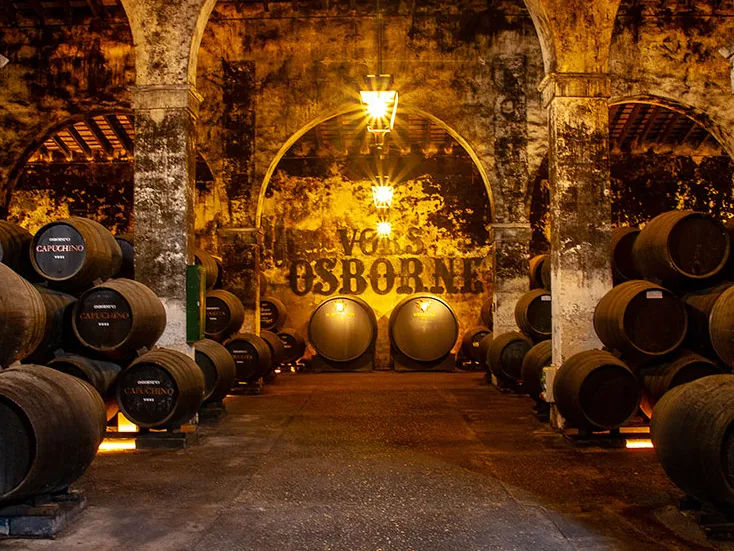
The initial fortification process occurs after the base wine has completed its fermentation. Grape brandy is the most commonly used spirit for fortification across all types of sherry. However, there can be variations in the specific type or style of grape brandy used, depending on the producer’s preferences or traditions.
Fortification halts the fermentation process and elevates the alcohol content of the wine, creating the fortified base wine that will undergo aging within the solera system. The fortified wine is then transferred to the first tier, or criadera of barrels within the solera, where the process of maturation and blending with older wines begins.
En rama and the trend for biological ageing
For purists, sherry bottled straight from the barrel, or en rama offers an unfiltered and unadulterated expression of the true essence of sherry, capturing its raw vitality and complexity.
Historically, the market for sherry has been been driven by a penchant for clear, pale wines—ideal culinary companions—and a producer’s pursuit of stability and longevity. This quest often led to excessive filtering, stripping sherries of their natural richness and depth of flavour, as well as their distinctive flor residues and impurities. Flor is a veil of yeast that forms spontaneously on the surface of the wine during its maturation and plays a pivotal role in shaping the character and flavour profile of sherry, particularly fino and manzanilla varieties. The presence of flor not only protects the wine from oxidation but also imparts distinctive aromas and flavours, ranging from the delicate notes of almonds and fresh bread to the briny tang of sea air. However, traditional filtration methods often remove these precious flor residues, robbing the sherry of its unique identity.
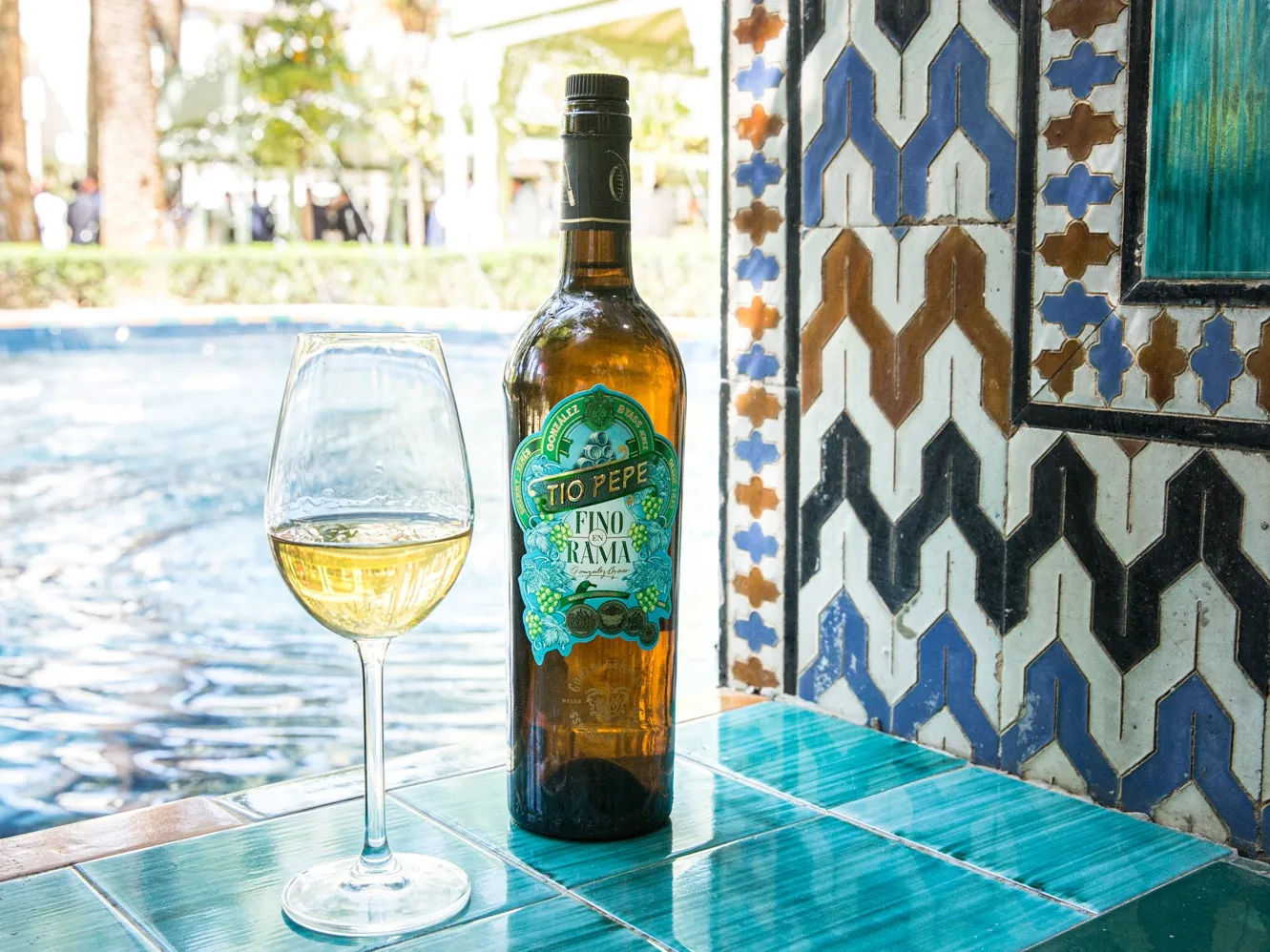
En rama sherries offer a departure from this tendency to over-filtering, presenting a nuanced compromise between appropriate stability and maximum flavour intensity. With minimal clarification, en rama sherries strike a delicate balance, retaining as much of the flavour and colour as possible, but straining out any undesirable residues. This approach preserves the essence of biological aging, allowing the wine to maintain its natural character.
In its unfiltered state, en rama sherry may exhibit a slight cloudiness—a testament to the barrel to bottle method. To sherry aficionados, this raw, unadulterated expression captures the raw, authentic essence of aged sherry as it’s meant to be enjoyed. Rather than striving for perfection in the appearance of the sherry, en rama strives to give the broadest spectrum of flavour that sherry has to offer.
As British as a glass of sherry
As with everything decent in the world, British blood flows in the very heart of sherry making. Involvement in sherry reflects the British spirit of adventure, entrepreneurial drive, and a Faustian willingness to embrace new opportunities.
Establishing businesses in foreign lands, such as the sherry-producing region of Jerez, was emblematic of this empire-building attitude. Several sherry houses were founded by British expatriates in the region, each contributing to sherry’s history and development.
Indeed, the legacy of British influence in sherry production stands as a testament to an enduring Anglo-Celtic Iberian alliance.
Cheers to the indomitable spirit of exploration and enterprise!
British contributions to sherry
González Byass
González Byass was established in 1835 by Manuel María González and Robert Blake Byass, in a partnership between a Spaniard and a British trader. González Byass remains one of the most renowned sherry producers in Jerez. González Byass might be most famous for Tío Pepe sherry, a deliciously dry fino. Perfect with seafood tapas on a hot Spanish day when the sol de justicia is beating down. Tío Pepe is also available en rama.
Harveys
Harveys was founded in 1796 by William Perry, an Englishman. Harveys is one of the oldest sherry producers in Jerez. The company is known for its Bristol Cream brand, which has become one of the most popular styles of sherry worldwide.
Duff Gordon
Duff Gordon bodega was established in the late 18th century by Francis Duff Gordon, a British wine merchant The company later became part of the Osborne Group, which continues to produce sherry among other wines and spirits.
Osborne
Osborne was established by Thomas Osborne Mann, an Englishman, who arrived in the Jerez region of Spain in the 1770s. Over time, his company, Thomas Osborne, grew to become one of the most prominent sherry producers in the region. The Osborne family acquired various vineyards and bodegas. In 1879, the Osborne family acquired the Duff Gordon wine business, which included vineyards, bodegas, and the associated brand. The Osborne bull, or toro de Osborne, is one of Spain’s most iconic symbols, deeply rooted in the country’s cultural heritage. Originally conceived as an advertisement for the Osborne sherry company in the early 1950s, these large black silhouettes of bulls dotting highways and countryside vistas became synonymous with Spanish landscapes and a beloved national symbol. It’s actually quite thrilling to see them.
Sandeman
Sandeman is primarily known for its port wines, but also produces sherry. It was founded in 1790 by George Sandeman, a Scotsman, and the company has expanded its portfolio to include sherry among other fortified wines.

Having Spain's back | Preserving Spain's sovereignty
The historical relationship between Spain and Britain has not always been harmonious. In previous centuries, tensions between the two nations, particularly during the time of the Spanish Armada in 1588, underscored geopolitical rivalries. However, despite historical animosities, the British have made significant contributions to safeguarding Spain's autonomy and preserving its cultural heritage, whilst keeping the sherry flowing. During the Peninsular War of the early 1800s, British forces, under the command of the Duke of Wellington, played a crucial part in resisting Napoleon’s expansion into the Iberian Peninsula. Wellington’s strategic brilliance and leadership prowess were instrumental in turning the tide against the French army, ultimately leading to their defeat and the liberation of Spain. At the time of the Spanish Civil War, Britons such as Peter Kemp volunteered to fight alongside the nationalist forces under General Francisco Franco. Kemp, a British army officer, played a significant role in various military campaigns, aiding in the efforts to prevent Spain from falling to the evils of communism. Peter Kemp's excellent book Mine Were of Trouble provides a personal account of his experiences during the Spanish Civil War. It offers insights into his time fighting alongside the Nationalist forces and provides a thrilling firsthand perspective on the conflict.The Douro Valley and the time-honoured craft of port making
Venturing to the picturesque Douro Valley of Portugal, we encounter the storied tradition of port wine production. Similar to sherry, port undergoes a production process that is steeped in tradition using centuries-old methods passed down through generations.
The meticulous aging process bestows upon ports their signature character. Whether it be the robust intensity of vintage ports, the mellow allure of tawny varieties, or the vibrant hue of ruby ports, the grape’s journey from vineyard to cellar produces fortified wines with the same kind of elegance and opulence as the finest sherries.
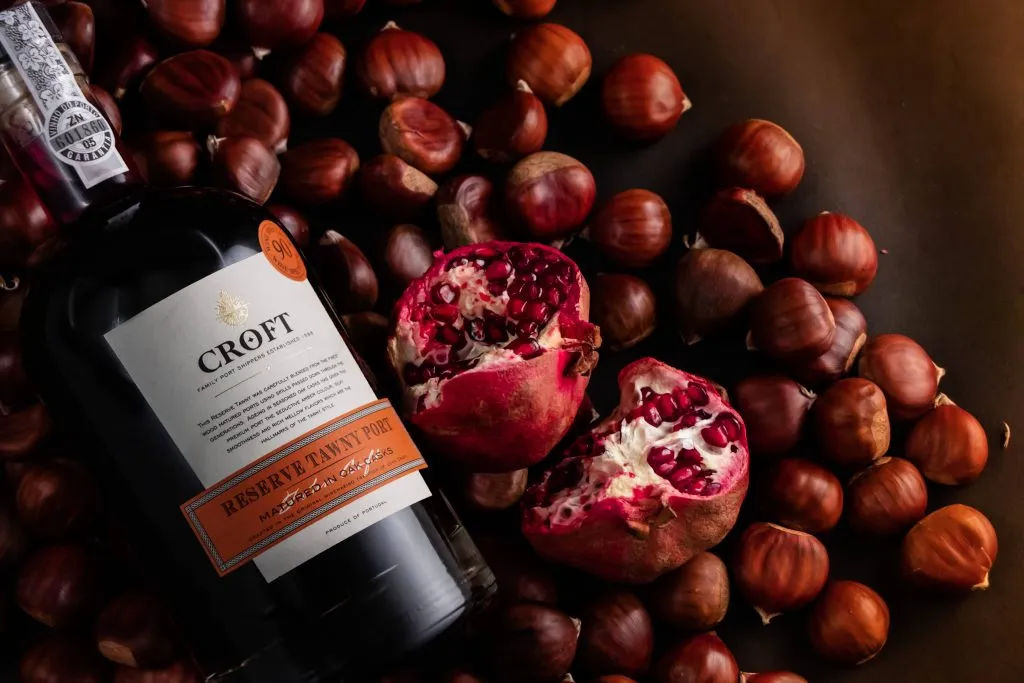
Tawny port
Aged in wooden barrels, tawny port develops a rich amber hue and nutty flavour profile. It offers a smooth and mellow drinking experience, with notes of caramel and dried fruits.
Colheita (single harvest) port
Colheita ports are a specific style of port made from grapes harvested in a single vintage year and aged as tawny ports
Ruby port
Known for its vibrant red color and fruity flavour profile, ruby port is typically aged for a shorter period in large vats, preserving its youthful characteristics and freshness.
Crusted (Crusty) port
This style of port is unfiltered, resulting in a natural sediment, or crust forming in the bottle. Crusted port offers a robust and complex flavour profile, with layers of fruit and spice.
White port
Made from white grape varieties, white port boasts a delicate flavour profile with hints of citrus and floral notes. It can be enjoyed as an aperitif or mixed in cocktails.
Reserve port
A designation given to port wines of exceptional quality, Reserve port undergoes longer aging periods and meticulous blending to achieve a harmonious balance of flavours.
Pink port
A recent innovation, pink port offers a refreshing and fruity alternative to traditional port styles. Its vibrant pink hue and lively acidity make it perfect for warm-weather sipping.
Late Bottled Vintage (LBV) port
LBV port is made from grapes harvested in a single vintage and aged in oak barrels for an extended period, then sometimes aged in the bottle for a period similar to vintage port. LBV offers the richness of a vintage port but with more approachability and affordability. As with unfiltered sherries, the market is growing for unfiltered LBV ports that retain more of the wine’s natural sediment and may undergo further aging in the bottle after release. However, filtered LBV ports may be more approachable and ready to drink upon release, without the need for decanting.
Vintage port
Considered the pinnacle of port production, vintage port is made from the finest grapes harvested in exceptional years. It is aged in the bottle for several years before release, resulting in a wine of unparalleled depth, complexity, and aging potential.
Ageing gracefully
The production of port involves a similar process to sherry production. After the grapes are harvested, they are crushed and fermented, usually with the addition of grape spirit to stop fermentation and preserve sweetness. The wine is then aged in oak barrels, where it undergoes oxidative aging for tawny ports or bottle aging for vintage ports.
Blending also plays a crucial role in port production, with master blenders meticulously combining wines from different vintages and vineyards to create harmonious blends. This blending process ensures consistency in quality and flavour profile across different port styles. While the solera system is most commonly associated with sherry production, it is also used in some instances of port production. In these cases, a fractional blending system is employed, where younger wines are gradually mixed with older wines.
For tawny ports, the aging process in barrels allows for gradual oxidation, resulting in the development of complex nutty and caramel flavours. The aging period can range from several years to several decades, with older tawny ports commanding higher prices due to their enhanced depth and complexity.
Vintage ports, on the other hand, are aged in the bottle, allowing them to evolve and mature over many years. Vintage ports are typically only produced in exceptional years, when the quality of the grapes is exceptional. After a brief period of aging in barrels, vintage ports are bottled and aged for several years before release. They are known for their intense fruit flavours, robust tannins, and exceptional aging potential.
The declaration of a vintage port signifies an exceptional harvest and the potential for producing wines of extraordinary quality. The responsibility for declaring a vintage falls to the Instituto dos Vinhos do Douro e porto (IVDP), the governing body that regulates the production and promotion of port wine.
The British legacy of port
Port might be even more strongly related to Britain than sherry. During the 17th and 18th centuries, British merchants were drawn to the bustling port city of Oporto, where barrels of port wine were shipped down the Douro River to be exported to markets around the world. Georgian England, in particular, developed a deep affection for port, and the market in the UK was practically insatiable. Recognizing the potential of this market and loving the product, enterprising British entrepreneurs established port houses along the banks of the Douro, forever shaping the landscape of the port wine trade.
Names like Taylor’s, Graham’s, and Cockburn’s are synonymous with excellence in port production, their legacies predominant in Portugal’s viticultural heritage. These port houses, founded by British families with a passion for wine, have stood the test of time, producing some of the finest examples of port for generations.
The British influence on the port industry extended beyond commerce, with British merchants and their families becoming deeply ingrained in the cultural fabric of the Douro Valley. Their estates, or quintas, dotted the landscape, with grand manor houses overlooking terraced vineyards. These estates not only served as centres of production but also as symbols of British ingenuity and dedication to the art of winemaking.
“Port is not for the very young, the vain and the active. It is the comfort of age and the companion of the scholar and the philosopher.” — Evelyn Waugh
British contributions to port
Croft
Established in 1588, Croft is one of the oldest port houses in Portugal. Originally founded by Henry Thompson, an Englishman, Croft has a rich heritage rooted in tradition and craftsmanship. Specializing in elegant and aromatic vintage ports, Croft continues to set the standard for quality and refinement in the world of port wine. in the 1970s Croft also extended its activities to Sherry with the famous Croft Original brand.
Taylor’s
Founded in 1692 by Job Bearsley, a British merchant, Taylor’s is one of the oldest and most esteemed port houses in the Douro Valley. Renowned for its vintage ports and tawny ports, Taylor’s continues to uphold a tradition of excellence and innovation in port production.
Graham’s
Established in 1820 by brothers William and John Graham, Graham’s quickly rose to prominence as a leading producer of vintage port. With vineyards spanning the Douro Valley’s most coveted terroirs, Graham’s is celebrated for its rich, opulent port wines and unwavering commitment to quality.
Cockburn’s
Founded in 1815 by Robert Cockburn, a Scottish merchant, Cockburn’s has long been synonymous with fine port wines. Known for its distinctive house style characterized by intense fruit flavours and robust tannins, Cockburn’s vintage ports are highly sought after.
Sandeman
As mentioned earlier, Sandeman was established in 1790 by George Sandeman, a Scottish merchant. Sandeman port is renowned for its iconic Don logo and distinctive house style.

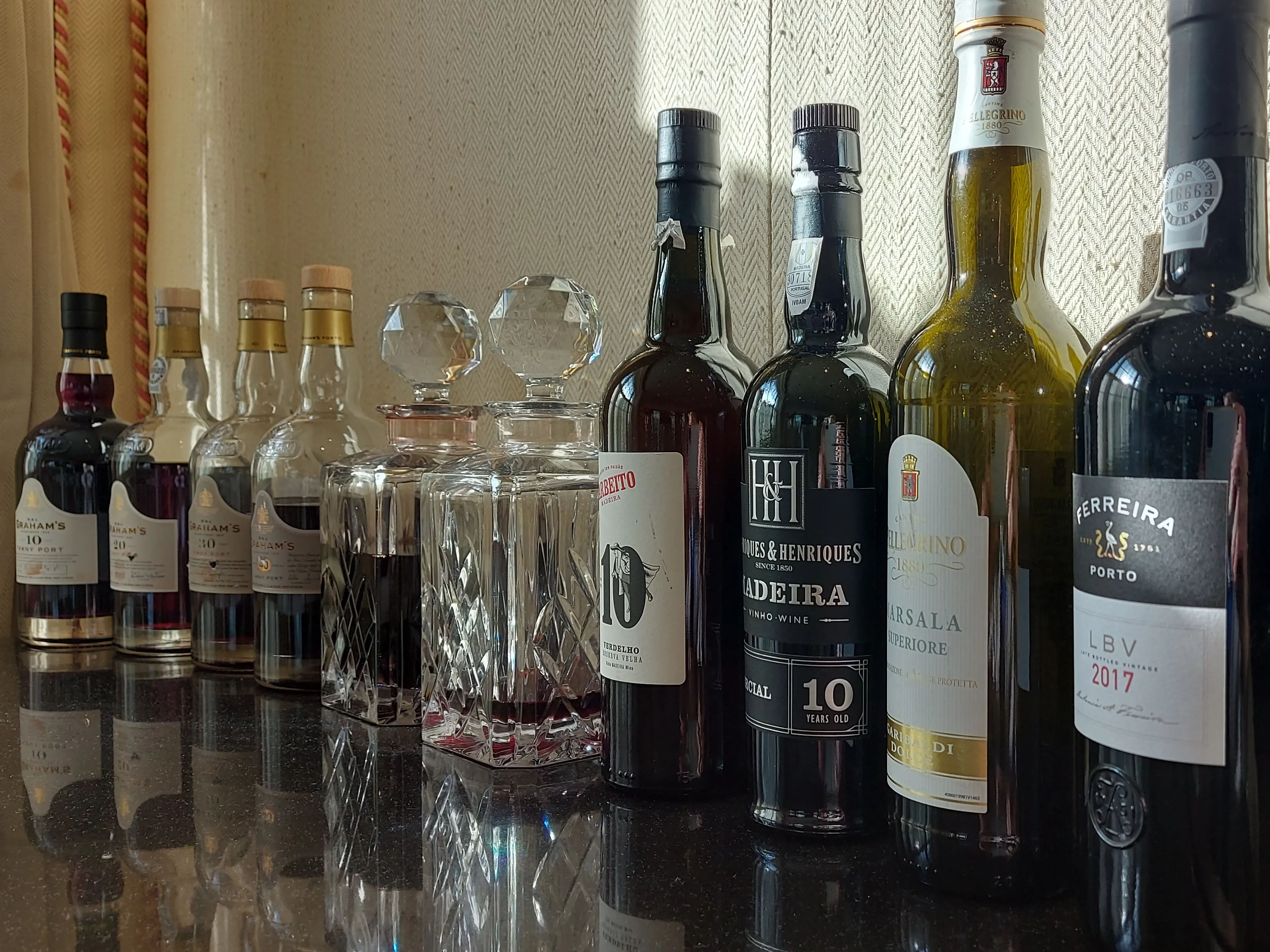
Unveiling the essence through decanting
Wine decanted into a beautiful hand-cut crystal decanter doesn’t just look great, the flavour of the wine benefits from being allowed to breathe and open up its flavours.
For vintage ports, decanting is essential to separate the wine from any sediment that may have formed during aging. This sediment, while harmless, can detract from the enjoyment of the wine if left in the bottle. Leaving the sediment behind ensures a clear and pristine pour. It’s generally recommended to decant vintage port several hours before serving to allow it to reach its full potential. For those seeking to savour the ultimate experience, some choose to decant vintage port several days in advance, allowing it to evolve and develop over time.
Similarly, older sherries, such as Amontillado or Oloroso, may benefit from decanting to aerate the wine and allow its complex flavours to fully develop. Decanting can also help to remove any subtle traces of oxidation that may have occurred, revitalizing the wine and restoring its vibrancy.
Preserving a legacy
Sherry and port stand as monuments to centuries of Iberian tradition, craftsmanship, and innovation. Yet, despite their illustrious histories, these noble drinks often find themselves overlooked and undervalued. How did this happen?
In an era dominated by trendy cocktails and fashionable spirits, the nuanced complexities of sherry and port have sometimes been overshadowed. However, to overlook these venerable drinks is to neglect a treasure trove of flavours and aromas that simply cannot be replicated elsewhere in the wine world.
From the sun-drenched vineyards of Jerez to the terraced slopes of the Douro Valley, sherry and port embody the essence of their respective regions. Each sip is a journey through time, a testament to the artistry and dedication of generations of winemakers.
Beyond their exquisite taste, sherry and port represent something greater: a connection to the past, a link to generations gone by. To sip these fortified wines is to be part of a European ritual that spans centuries. It would be a tragedy to allow the legacy of sherry and port to fade into obscurity. We must play our part in preserving a cherished tradition but also support the communities and industries that rely on their production.
So let us raise our sherry copitas and port glasses in toast to fortified wines, to the artisans who craft them, and to the history and heritage they represent. Let us rediscover the joy of savouring a glass of something truly extraordinary and delicious, and in doing so, ensure that the legacy of these remarkable fortified wines endures for generations.
“A good sherris sack hath a two-fold operation in it. It ascends me into the brain; dries me there all the foolish and dull and curdy vapours which environ it; makes it apprehensive, quick, forgetive, full of nimble fiery and delectable shapes, which, delivered o’er to the voice, the tongue, which is the birth, becomes excellent wit. The second property of your excellent sherris is, the warming of the blood; which, before cold and settled, left the liver white and pale, which is the badge of pusillanimity and cowardice.” — Shakespeare, Henry IV, Part 2, Falstaff extolling the virtues of sherry (sherris sack)






